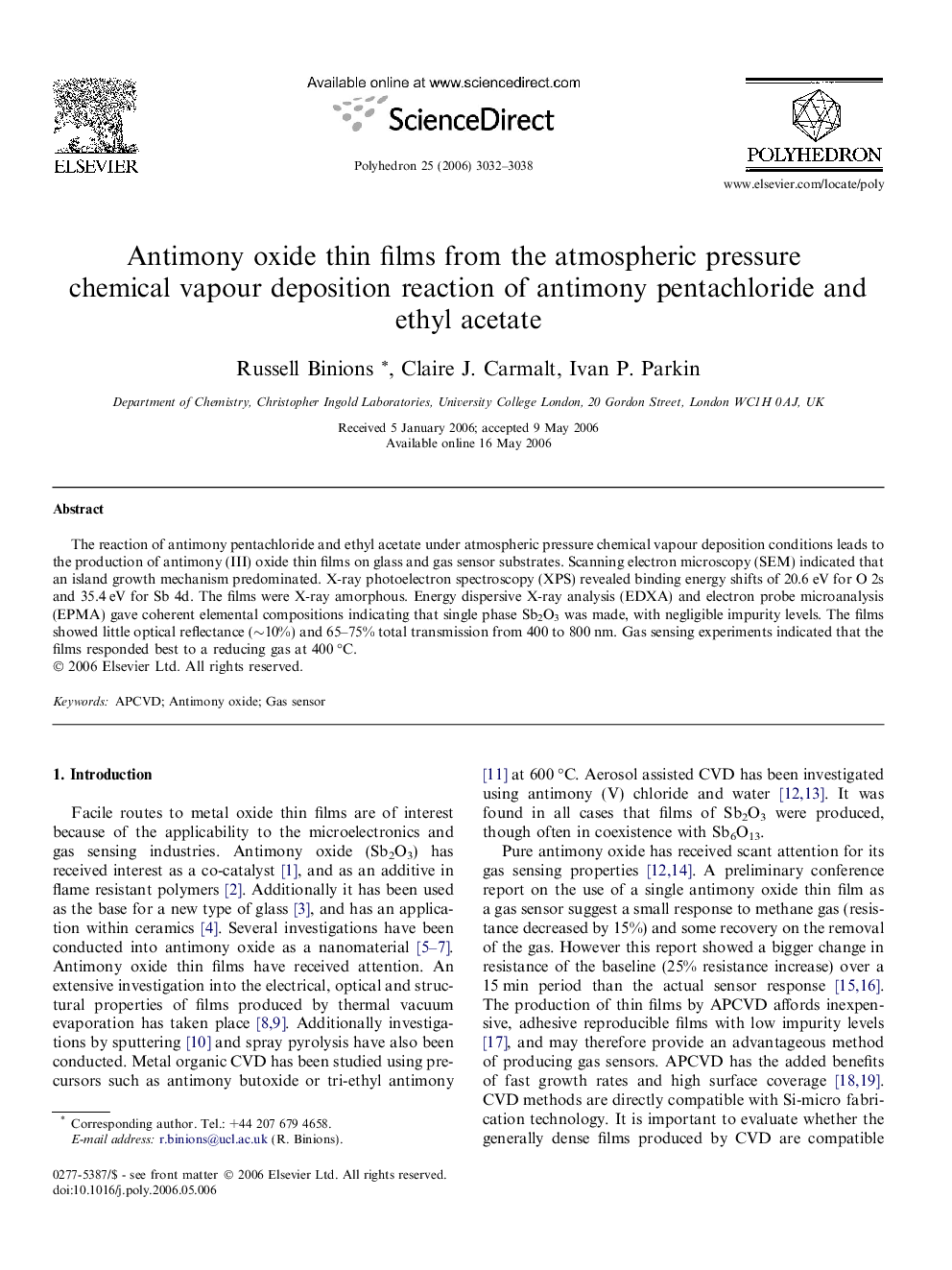| کد مقاله | کد نشریه | سال انتشار | مقاله انگلیسی | نسخه تمام متن |
|---|---|---|---|---|
| 1335651 | 979541 | 2006 | 7 صفحه PDF | دانلود رایگان |

The reaction of antimony pentachloride and ethyl acetate under atmospheric pressure chemical vapour deposition conditions leads to the production of antimony (III) oxide thin films on glass and gas sensor substrates. Scanning electron microscopy (SEM) indicated that an island growth mechanism predominated. X-ray photoelectron spectroscopy (XPS) revealed binding energy shifts of 20.6 eV for O 2s and 35.4 eV for Sb 4d. The films were X-ray amorphous. Energy dispersive X-ray analysis (EDXA) and electron probe microanalysis (EPMA) gave coherent elemental compositions indicating that single phase Sb2O3 was made, with negligible impurity levels. The films showed little optical reflectance (∼10%) and 65–75% total transmission from 400 to 800 nm. Gas sensing experiments indicated that the films responded best to a reducing gas at 400 °C.
The reaction of antimony pentachloride and ethyl acetate under atmospheric pressure chemical vapour deposition conditions leads to the production of antimony (III) oxide thin films on glass and gas sensor substrates. Scanning electron microscopy (SEM) indicated that an island growth mechanism predominated. X-ray photoelectron spectroscopy (XPS) revealed binding energy shifts of 20.6 eV for O 2s and 35.4 eV for Sb 4d. The films were X-ray amorphous. Energy dispersive X-ray analysis (EDXA) and electron probe microanalysis (EPMA) gave coherent elemental compositions indicating that single phase Sb2O3 was made, with negligible impurity levels. The films showed little optical reflectance (∼10%) and 65–75% total transmission from 400 to 800 nm. Gas sensing experiments indicated that the films responded best to a reducing gas at 400 °C.Figure optionsDownload as PowerPoint slide
Journal: Polyhedron - Volume 25, Issue 15, 3 November 2006, Pages 3032–3038